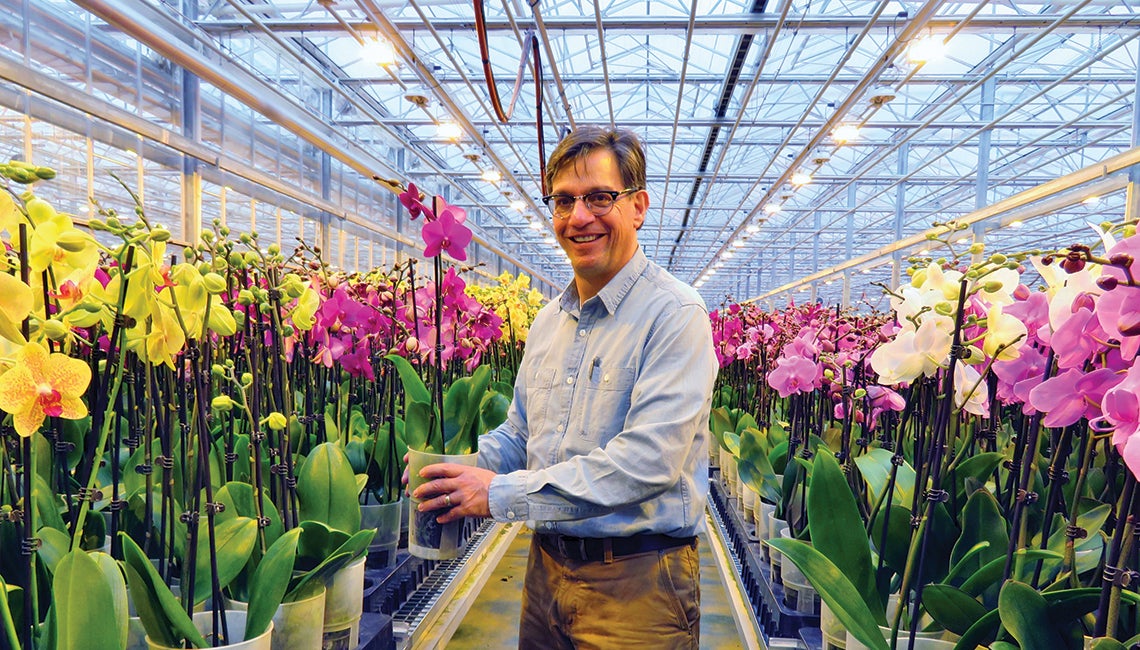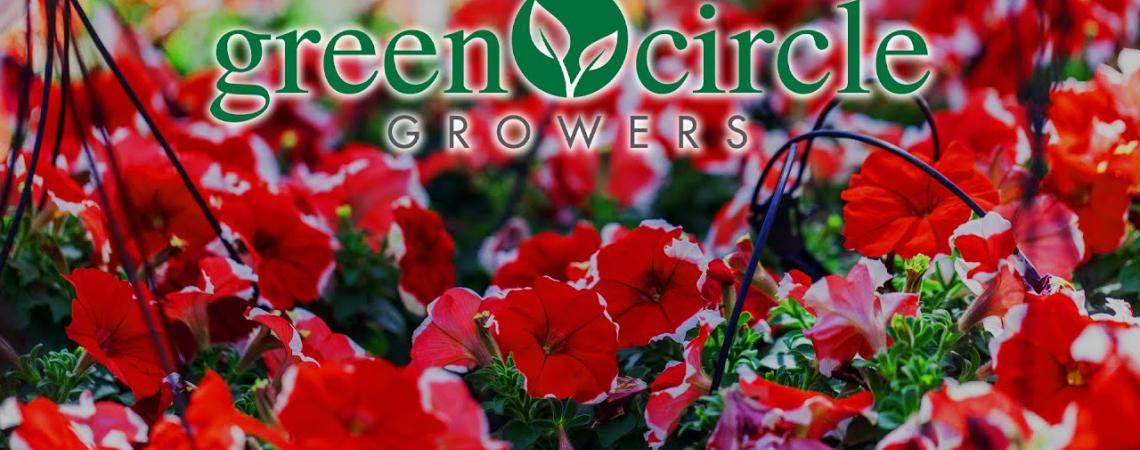With jade leaves held upright by translucent vases and tall flower spikes laden with buds, Phalaenopsis orchids ride on a conveyor belt inside the orchid range at Green Circle Growers. A computerized camera has just photographed the orchids, and soon a series of automated arms will embrace each one and methodically funnel it into a row of similar plants.
“The camera takes 10 digital pictures of every orchid to determine how developed it is,” says Jose Martinez, marketing manager at GCG. “The plants are then grouped according to their size and number of spikes and blooms. If a plant is too small, it goes back to a growing area.”
A member of Lorain-Medina Rural Electric Cooperative, Green Circle Growers ranks among the nation’s largest and most innovative greenhouses, operating 100 acres of indoor growing space and 35 acres of outdoor growing space in the countryside west of Oberlin. It also employs more than 800 people and is Lorain-Medina’s largest consumer of electricity.
John van Wingerden founded Green Circle Growers as a vegetable farm in 1968. While the company remains family owned and managed, it now grows and distributes bedding plants; seasonal plants such as poinsettias, Easter lilies, and mums; and a diverse selection of indoor potted plants that includes Crassula succulents, leafy dieffenbachia, tiny bonsai trees, and a veritable rainbow of prolifically blooming Phalaenopsis orchids. Green Circle Growers, in fact, devotes 33 acres of greenhouse space to orchids and has blossomed into the top orchid grower in North America. “We produce 8.5 million orchids every year,” says Martinez. “Because they’re all grown under roof, we raise and sell them year-round.”
Florida and California establishments have traditionally dominated U.S. orchid production, but this Ohio company became a major player by adopting technology and sustainable practices that allow it to mass-produce Phalaenopsis hybrids. Since the Dutch are old masters at state-of-the-art floriculture, much of the advanced grading machinery came from the Netherlands. Orchids get digital codes that allow constant monitoring of their growth, and when they’ve sufficiently matured, a robot not only assembles shipping boxes but also packs the plants inside. “A box contains thirteen plants, and the robot can build and pack 180 boxes in an hour,” says Martinez. The company installed environment-friendly boilers fueled by tree waste and recycled pallets to help to simulate the tropical conditions in which the orchids naturally grow, and by using retention ponds to collect rainwater, its irrigation system yields 1.5 million gallons of water for every inch of rainfall.
In addition to marketing succulent and foliage plants under its Wild Interiors trademark, Green Circle Growers developed the Just Add Ice brand for its Phalaenopsis orchids to emphasize that the plants, which are known as the “beginner’s orchid,” are exceptionally easy to care for. The name also reflects the Ohio State University and University of Georgia studies that proved ice cubes are a simple way for orchid owners to properly water plants. “Ice irrigation has no harmful effects and helps roots take water,” says Caitlin Fisher, GCG’s content manager. “The slow drip of melting ice is like raindrops in a tropical forest.” Green Circle Growers recommends three ice cubes per week and offers online video instruction and care tips.
Although its primary customers are national retailers like Home Depot, Sam’s Club, and Trader Joe’s, Green Circle Growers also sells plants directly to consumers through its website. Just Add Ice orchids are two years old at the time of sale and are available in seven color categories and three pot sizes — premium (5 inch), petite (3 inch), and mini (2.5 inch) — suitable for gifting or decorating. In each size, all plants are the same height and have the same number of blooms. “We make sure the orchids are consistent because we want customers to avoid design fatigue,” Fisher says. “We just want people to enjoy picking their colors.”










